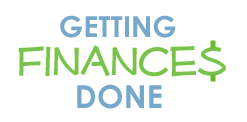Archive for the ‘Spending’ Category
How to buy a piano (or anything) online for less than half price using RSS feeds
Written by Sam on August 15, 2007 – 8:30 pm - Several months ago I wrote a post detailing how to put your online shopping on steroids by using RSS feeds to find great deals. Not long after writing the article, my sister heard about it and decided to try using the RSS technique to buy a Yamaha DisKlavier piano.
Several months ago I wrote a post detailing how to put your online shopping on steroids by using RSS feeds to find great deals. Not long after writing the article, my sister heard about it and decided to try using the RSS technique to buy a Yamaha DisKlavier piano.
The piano she had in mind retails for about $10,000 and she had seen used, older models for as low as $6,000. She was hoping to find one at an even lower price of $5,000.
She had been spending 2-4 hours a week searching extensively from October to March and had found nothing. She was willing to travel within a 12 hours radius to pick up the piano if she found a good deal so she was even actively searching classified ads and on Craigslist in other major cities – but still no success.
Once she read my article, she had her husband set up an RSS search feed on CraigsList.com for the piano. Literally within 2 days she found an available piano about 12 hours away for the ridiculously low price of $2,500. It seemed to good to be true but they drove there anyway. It turned out to be a piano in excellent condition that had only been played once! They literally walked away with an $8,000 piano (that’s the going used price) for $3,500.
Shopping using RSS feeds really is a revelation. I’m surprised I haven’t seen the topic catching on more. I’m surprised by how much the general population doesn’t know about RSS feeds yet. Particularly when they can make such a huge difference in productivity. If you haven’t been introduced to RSS feeds yet, particularly for use in shopping online, check out the two posts below.
Posted in Shopping, Spending | 5 Comments »
Financial Peace University Part 4 – How to be a smart consumer
Written by Sam on August 14, 2007 – 10:40 pm - In part four of the Financial Peace University I’ll cover week 9 titled “Buyer Beware.”
In part four of the Financial Peace University I’ll cover week 9 titled “Buyer Beware.”
Week 9 Buyer Beware
Dave Ramsey talks about how marketing affects behavior and subsequently debt levels. Some of the information about how companies use marketing to entice consumers is interesting but I somewhat question the usefulness on a practical level. Simply knowing the tactics companies are using doesn’t mean you’ll be immune to their effect.
Beware of marketing tactics
Here are some examples Dave uses:
- The number of daily marketing impressions the average person is exposed to has increased from 500 in 1971 to over 4,000 today. I believe it. In today’s multimedia culture, particularly with the internet, we are exposed almost constantly.
- More than half the GDP consists of consumption spending.
- Dave outlines the ways we’re sold to, including
- Personal selling – Sales materials are increasingly customized and personal. By using database technologies, companies often have much information on potential buyers and are able to target individual needs.
- Financing – Many businesses provide lines of credit or other forms of financing. In fact, some businesses make more money from financing than they do on actual consumer goods sales. I shouldn’t even need to mention that it’s a mistake to buy consumer goods with borrowed money.
- Repetition – This one is self explanatory. This one is self explanatory.
- Product positioning – Ever noticed the ice cold drinks displayed prominently in the store on a blistering hot day? Large companies are very savvy and do extensive research to determine the best way to position products in a store.
Again, I found this information useful but not incredibly useful or practical. There are many ways companies market that Dave left out. In fact, I currently run the marketing for a multi-million dollar internet company and am very familiar with many additional sophisticated marketing techniques. For example, a techniques called means-end laddering identifies the high-level personal benefits and values of consumers and emotionally ties the products features to them. Statistical clustering allows marketers to profile certain market segments in great detail and can effectively predict how certain segments will react to products. Conjoint analysis allows marketers to predict how much more a consumer will pay for a product given a tweak in the features of the product (e.g. gel vs. paste consistency in toothpaste).
Although marketers use these techniques, they are not necessarily bad. While they can be used for evil purposes, for the most part they can actually benefit the consumer. Using such tools, companies can create products that more fully meet consumer preferences. As a result, the consumer’s quality of living increases over time.
How to save on big purchases
On the more practical side, Dave gives a few very good tips for spending less, particularly on large purchases.
- Wait over night before making a large purchase (being defined as $300 to $1,000 depending on how much money you make). Many of the large, multi-hundred dollar purchases people make are surprisingly impulse purchases. This happens particularly when people receive large lump sums of money such as a bonus. They go on a shopping spree and before they know it have spent the money on things they may not care that much about. The simple act of waiting overnight to make the purchase will deter most frivolous impulse purchases. Once the excitement of the moment has worn off, your brain actually thinks about it and realizes you’d rather spend the money elsewhere or even save it.
- Understand the difference between needs and wants. You don’t need the wide screen 60″ LCD TV. You might really, really, really want it, but you don’t need it. Your needs are food, shelter, clothing, and transportation.
- Never buy anything you don’t understand. If the sales person can’t explain it in terms you understand, don’t buy it. Buying things you don’t understand inevitably will cause you to buy something that doesn’t really fit your needs.
- Consider the opportunity costs (what else could you do with the money). Opportunity cost is an economic term defined as the most valuable foregone alternative. Put in layman’s terms, what else could you do with your money? For example, if you spend $1,000 on the TV, what will you not be able to buy with that $1,000? Maybe there’s something else on your list of wants that you’d rather have even more. I frequently experience regret from buying several smaller items and realizing later that I could have saved that money to buy a bigger item that I want significantly more than the smaller ones.
- Seek the counsel of your spouse. As painful as it may be, two minds are better, or at least more reasonable, than one. Unless you are spending personal money, you should consult your spouse on all major purchases anyway. A spouse can offer a different perspective and can often bring to your attention other uses for the funds or other alternatives that may meet your needs at a lower cost.
Posted in Dave Ramsey, Shopping, Spending | 3 Comments »
Put your mouth where your money is: Does eating healthy cost more?
Written by Emily on July 10, 2007 – 10:39 am -Sam and I have recently started a new diet–a combination of Dr. Oz’s YOU diet, and Bob Greene’s Best Life Diet. Our focus is not so much on losing weight, but on making healthy eating and lifestyle changes. One thing that may have to change is our grocery budget. At least half of my grocery shopping is now done in the produce aisle–all the fresh fruits and veggies seem to add up. But am I really going to spend more in the long run? Some things I’m NOT buying lately: a lot of meat, cold cereal, huge bags of cheese, and white bread. Also, I’ve cut way back on eating out.
Carolyn O’Neil (a registered dietitian) asked her readers the same question. It seems that no matter how we choose to eat, we always pay a price–either in money or in poor health.
The University of Pittsburgh Medical Center offers some suggestions for eating healthy without breaking the bank.
I’d love to hear if healthy eating has changed your spending, and your tips and tricks for eating healthy on a budget.
Posted in Budget, Spending | 3 Comments »
How to save hundreds of dollars on Zofran (and possibly other prescription drugs)
Written by Sam on March 13, 2007 – 11:12 pm -
How to lower your zofran cost
How I got a $600 Zofran (ondansetron) prescription for $10
I mentioned earlier that my wife recently had surgery. During her recovery she was prescribed several medications which were hard on her stomach and caused severe nausea. In fact, she couldn’t even keep down the anti-nausea medication which eventually resulted in a trip to the emergency room a couple nights after the surgery.
They gave her a prescription for another anti-nausea medication called Zofran. This little pill works wonders and solved her nausea problems. The only problem came when we ran out of the Zofran the hospital gave us and we had to fill the prescription. To our dismay, we found out it was going to cost almost $600 for 30 pills. Actually it would have only cost about $250 because our insurance would only cover 13 pills. And that was for the generic version. I was absolutely blown away. Here we are absolutely reliant on Zofran to get through my wife’s recovery having just spent a significant amount on a surgery and subsequent emergency room visit. We got estimates from other main-stream pharmacies with similar results.
We actually learned later that Zofran is commonly used for chemotherapy patients and pregnant women to help with nausea. In fact I have two sisters-in-law that used it extensively during their pregnancies. And they paid through the nose as well.
Fortunately, we remembered that our surgeon had suggested a little old-school pharmacy by the hospital where they mix some drugs themselves. I’m not sure I’ll explain this correctly, but from what I understood they actually buy the raw drug (the generic name for Zofran is ondansetron) and make the pills themselves. This is different than buying the generic version because the generic version is purchased as a completed pill.
I figured I had nothing to lose so I ran over to their pharmacy and asked how much it would be. To my shock and pleasant surprise, they quoted me $10. I had to verify that it was correct and sure enough, it was a measly $10. I was blown away, and still am, that there could be such a price difference. I feel like I want to shout it from the rooftops to all chemotherapy patients, pregnant women, or otherwise nauseous people in the world. It felt like winning the lottery.
So my question to all GFD readers is, has anyone had a similar experience? Are there other expensive drugs that could be purchased inexpensively if mixed by the pharmacist? I plan on researching this further and will share the results.
Posted in Spending | 10 Comments »
Buy ties (neckties) at a discount
Written by Sam on January 25, 2007 – 4:00 am - Ok, this post is a little random. But I recently learned about a new site that does one thing and does it well: sell ties. The site, www.wearcacti.com, offers free shipping and ties as low as $9 (if you order 5 ties). I actually ordered tie #21 (I wanted a little Trump vibe) and was very happy with the quality. Looking back, I should have ordered 3 ties for $11 each since I’ve been wearing the same ties for years.
Ok, this post is a little random. But I recently learned about a new site that does one thing and does it well: sell ties. The site, www.wearcacti.com, offers free shipping and ties as low as $9 (if you order 5 ties). I actually ordered tie #21 (I wanted a little Trump vibe) and was very happy with the quality. Looking back, I should have ordered 3 ties for $11 each since I’ve been wearing the same ties for years.
I loved the simplicity of the wearcacti site. It reminds me of Google’s bare-bones simple interface. You can buy 1, 3, or 5 ties at an increasing discount. The selection is small at this point but I talked with an owner and he indicated they will be expanding their selection soon. If you’re in need of a tie update, check it out.
On an even more random note, here are a few sites that explain how to tie a neck tie:
Plezer
Krawattenknoten
Paul Fredrick

Shopping online can increase your ability to save money on items from
TVs to toys, take
advantage of the opportunity to compare prices.
Posted in Saving, Spending | Comments Off on Buy ties (neckties) at a discount


 Subscribe via email
Subscribe via email  Become a fan
Become a fan Subscribe via RSS
Subscribe via RSS Follow me
Follow me